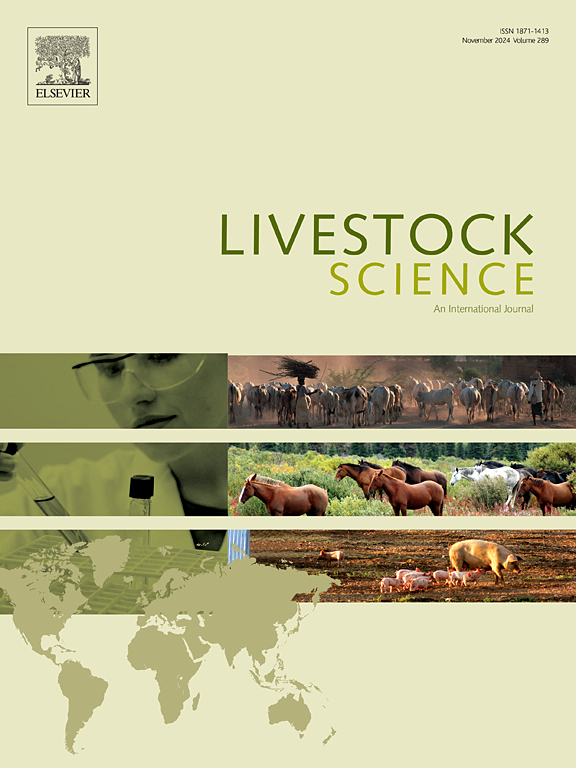Net energy requirements for maintenance and weight gain in male guinea pigs (Cavia porcellus) of the Peru breed
IF 1.9
3区 农林科学
Q2 AGRICULTURE, DAIRY & ANIMAL SCIENCE
引用次数: 0
Abstract
This study aimed to estimate the net and metabolizable energy requirements for maintenance (NEm, MEm) and gain (NEg, MEg), along with the efficiencies of metabolizable energy utilization for maintenance (km) and weight gain (kg), in intact male guinea pigs of the Peru breed. Sixty animals were assigned to three feeding levels: ad libitum, restricted (75 % of ad libitum intake), and maintenance (150–160 kcal DE/kg BW0.75/day). A metabolism trial and a comparative slaughter technique were employed to determine gross energy intake (GEI), digestible energy (DE), metabolizable energy (ME), heat production (HP), and retained energy (RE). NEm and MEm were estimated at 100 and 149 kcal/kg EBW⁰·⁷⁵/day, respectively, with corresponding efficiencies km and kg of 67 % and 48 %. The NEg requirement increased with both body weight (BW) and daily weight gain (DWG), ranging from 15.3 to 18.7 kcal/day for 5 g DWG in animals weighing 900 to 1200 g. The NEg ranged between 3.06 and 3.74 kcal/g of BW gained, with higher values attributed to increased fat deposition. These findings highlight the importance of considering both growth rate and body composition in energy requirement estimations. The results support the development of more accurate and tailored feeding systems for guinea pigs raised for meat production.
秘鲁品种雄性豚鼠(Cavia porcellus)维持和增重的净能量需求
本研究旨在估计秘鲁品种雄性豚鼠的维持净能和代谢能需要量(NEm、MEm)和增重(NEg、MEg),以及维持代谢能利用效率(km)和增重(kg)。将60只动物分为3个摄食水平:自由摄食、限制摄食(摄食量的75%)和维持摄食(150 ~ 160 kcal DE/kg BW0.75/天)。采用代谢试验和比较屠宰技术测定总能采食量(GEI)、消化能(DE)、代谢能(ME)、产热(HP)和蓄能(RE)。NEm和MEm估计分别为100和149 kcal/kg EBW⁰·⁷5 /day,相应的效率km和kg分别为67%和48%。在体重900 ~ 1200 g的动物中,NEg需要量随体重(BW)和日增重(DWG)的增加而增加,在5 g DWG时,NEg需要量为15.3 ~ 18.7千卡/天。NEg值在3.06 ~ 3.74千卡/克增重之间,随着脂肪沉积的增加,NEg值越高。这些发现强调了在能量需求估计中同时考虑生长速度和身体成分的重要性。研究结果支持为肉制品饲养的豚鼠开发更精确和量身定制的喂养系统。
本文章由计算机程序翻译,如有差异,请以英文原文为准。
求助全文
约1分钟内获得全文
求助全文
来源期刊

Livestock Science
农林科学-奶制品与动物科学
CiteScore
4.30
自引率
5.60%
发文量
237
审稿时长
3 months
期刊介绍:
Livestock Science promotes the sound development of the livestock sector by publishing original, peer-reviewed research and review articles covering all aspects of this broad field. The journal welcomes submissions on the avant-garde areas of animal genetics, breeding, growth, reproduction, nutrition, physiology, and behaviour in addition to genetic resources, welfare, ethics, health, management and production systems. The high-quality content of this journal reflects the truly international nature of this broad area of research.
 求助内容:
求助内容: 应助结果提醒方式:
应助结果提醒方式:


